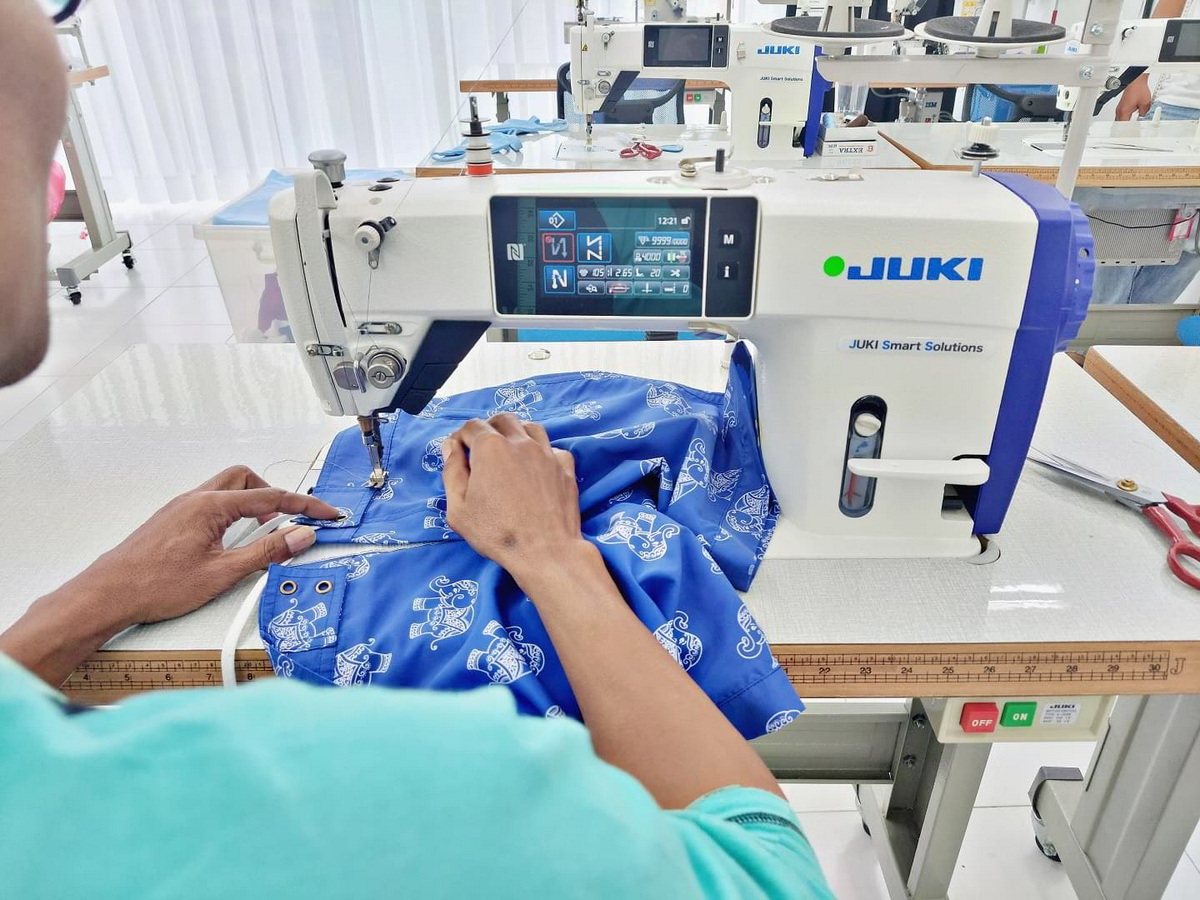Content Menu
● The Evolution of Swimwear Manufacturing in Vietnam
● Key Players in the Vietnamese Swimwear Market
● The Market Dynamics Driving Growth
● Challenges Facing Swimwear Manufacturers
● Innovations in Swimwear Design
● Sustainability Initiatives
● The Role of Trade Agreements
● Future Outlook for Swimwear Manufacturers in Vietnam
● Frequently Asked Questions (FAQs)
>> 1. What materials are commonly used by swimwear manufacturers in Vietnam?
>> 2. Are there specialized manufacturers for men's swimwear in Vietnam?
>> 3. How long does it take to produce a swimsuit?
>> 4. Are Vietnamese swimwear manufacturers adopting new technologies?
>> 5. Where can I find unique custom swimwear options in Vietnam?
● Conclusion
● Citations:
Vietnam has emerged as a key player in the global swimwear manufacturing industry, driven by its rich textile heritage, skilled labor force, and favorable trade conditions. This article delves into the landscape of swimwear manufacturers in Vietnam, exploring their capabilities, market trends, and the factors contributing to their growth.

The Evolution of Swimwear Manufacturing in Vietnam
Vietnam's journey as a swimwear manufacturing hub began in the late 20th century. With a focus on quality craftsmanship and competitive pricing, Vietnamese manufacturers quickly gained recognition in both domestic and international markets. Today, Vietnam is home to numerous swimwear manufacturers that cater to various segments, including private labels, high-end brands, and mass-market retailers.
The country's strategic location in Southeast Asia provides easy access to major shipping routes, making it an attractive destination for brands looking to source swimwear at competitive prices. Moreover, Vietnam's commitment to sustainability and ethical manufacturing practices has further enhanced its reputation among global brands.
Key Players in the Vietnamese Swimwear Market
Several manufacturers have established themselves as leaders in the Vietnamese swimwear industry. Notable companies include:
- Xuan Thu: Founded in 1970, Xuan Thu is one of Vietnam's pioneering swimwear brands. The company specializes in high-quality swimwear and activewear, leveraging decades of experience and craftsmanship to produce stylish and functional products.
- Vishimex: Known for its diverse range of apparel, Vishimex manufactures swimwear alongside other clothing categories. The company emphasizes innovative designs and competitive pricing, catering to various customer needs.
- Wings2Fashion: This manufacturer focuses on private label swimwear production. With a commitment to quality and customization, Wings2Fashion collaborates closely with clients to create unique swimwear collections that reflect current trends.
These manufacturers not only produce for local markets but also export their products globally, contributing significantly to Vietnam's economy.

The Market Dynamics Driving Growth
The growth of swimwear manufacturers in Vietnam can be attributed to several key factors:
- Rising Demand for Swimwear: With an increasing interest in fitness and outdoor activities, there is a growing demand for stylish and functional swimwear. This trend is particularly pronounced among younger consumers who prioritize fashion alongside performance.
- Tourism Boom: Vietnam's picturesque beaches and vibrant tourism sector have fueled the demand for swimwear. As more tourists visit the country, local manufacturers are well-positioned to meet their needs with a variety of stylish options.
- Sustainability Trends: As consumers become more environmentally conscious, many swimwear manufacturers are adopting sustainable practices. This includes using recycled materials and implementing eco-friendly production processes.
- Technological Advancements: The integration of technology in manufacturing processes has improved efficiency and quality control. Many manufacturers are now utilizing automated cutting machines and advanced sewing techniques to enhance production capabilities.
Challenges Facing Swimwear Manufacturers
Despite the positive outlook for the industry, Vietnamese swimwear manufacturers face several challenges:
- Competition from Low-Cost Countries: While Vietnam offers competitive pricing, it still faces competition from countries with even lower labor costs. Manufacturers must continuously innovate and improve quality to maintain their market position.
- Supply Chain Disruptions: Global events such as pandemics or geopolitical tensions can disrupt supply chains. Manufacturers need to develop resilient strategies to mitigate these risks.
- Changing Consumer Preferences: As fashion trends evolve rapidly, manufacturers must stay ahead of consumer preferences while managing production timelines effectively.
Innovations in Swimwear Design
The Vietnamese swimwear industry is not only about manufacturing; it also embraces innovation in design. Many manufacturers are investing in research and development to create cutting-edge swimwear that meets modern consumer demands.
- Smart Fabrics: Some companies are exploring smart fabrics that offer features such as UV protection, quick-drying properties, and moisture-wicking capabilities. These innovations cater to consumers looking for functionality alongside style.
- Customizable Options: Many brands are now offering customizable swimwear options where consumers can choose colors, patterns, and even styles. This trend allows customers to express their individuality while enhancing brand loyalty.
- Inclusive Sizing: Recognizing the diverse body types of consumers, several manufacturers are expanding their size ranges to include plus sizes and adaptive swimwear options. This inclusivity not only meets market demand but also fosters a positive brand image.

Sustainability Initiatives
Sustainability has become a significant focus for many swimwear manufacturers in Vietnam. As global awareness regarding environmental issues rises, companies are taking proactive steps toward sustainable practices:
- Use of Recycled Materials: Many manufacturers are now incorporating recycled polyester made from plastic bottles into their products. This not only reduces waste but also appeals to eco-conscious consumers.
- Eco-Friendly Production Processes: Manufacturers are adopting eco-friendly dyeing processes that minimize water usage and reduce harmful chemical discharges into waterways.
- Transparency and Ethical Practices: Brands are increasingly emphasizing transparency in their supply chains by ensuring fair labor practices and responsible sourcing of materials. This focus on ethics resonates with consumers who prioritize socially responsible brands.
The Role of Trade Agreements
Vietnam's participation in various free trade agreements (FTAs) has significantly impacted its swimwear manufacturing sector. Agreements such as the Comprehensive and Progressive Agreement for Trans-Pacific Partnership (CPTPP) have opened new markets for Vietnamese products:
- Tariff Reductions: These agreements often lead to reduced tariffs on exports, making Vietnamese swimwear more competitive against products from other countries.
- Increased Investment: FTAs attract foreign investment into the manufacturing sector as international brands seek partnerships with local manufacturers who can provide quality products at competitive prices.

Future Outlook for Swimwear Manufacturers in Vietnam
The future looks bright for swimwear manufacturers in Vietnam. With ongoing investments in technology and a focus on sustainability, these companies are well-equipped to adapt to changing market dynamics. Additionally, as global demand for swimwear continues to rise, Vietnamese manufacturers are likely to expand their market share both domestically and internationally.
Moreover, as the world becomes increasingly interconnected through digital platforms, Vietnamese brands can leverage e-commerce channels to reach global customers directly. By establishing robust online presences and engaging with consumers through social media platforms, these manufacturers can enhance brand visibility and drive sales growth.
In conclusion, Vietnam's position as a leading destination for swimwear manufacturing is solidified by its skilled workforce, commitment to quality, adaptability to market trends, innovative designs, sustainable practices, and favorable trade conditions. As the industry continues to evolve amidst changing consumer preferences and global challenges, Vietnamese manufacturers are poised for sustained growth in the coming years.
Frequently Asked Questions (FAQs)
1. What materials are commonly used by swimwear manufacturers in Vietnam?
- Swimwear manufacturers typically use materials such as nylon, polyester, spandex, and increasingly recycled fabrics for sustainable options.
2. Are there specialized manufacturers for men's swimwear in Vietnam?
- Yes, many Vietnamese manufacturers offer a wide range of men's swimwear styles tailored specifically for male consumers.
3. How long does it take to produce a swimsuit?
- Production time varies based on design complexity and order volume but generally takes several hours per suit.
4. Are Vietnamese swimwear manufacturers adopting new technologies?
- Yes, many manufacturers are integrating advanced technologies into their processes for better efficiency and precision.
5. Where can I find unique custom swimwear options in Vietnam?
- Several manufacturers offer custom designs; clients can share their ideas or tech packs for tailored production.
Conclusion
In summary, the landscape of swimwear manufacturing in Vietnam is characterized by innovation, quality craftsmanship, sustainability initiatives, strategic trade agreements, and an increasing focus on consumer preferences. As global demand continues to rise alongside environmental consciousness among consumers, these factors position Vietnamese manufacturers favorably within the competitive swimming apparel market.

Citations:
[1] https://www.xuanthuswim.com/manufacture
[2] https://vishimex.com
[3] https://www.6wresearch.com/industry-report/vietnam-swimwear-market-outlook
[4] https://www.wings2fashion.com/vietnam/swimwear-manufacturers/
[5] https://www.alibaba.com/showroom/swimwear-manufacturers-in-vietnam.html




































































